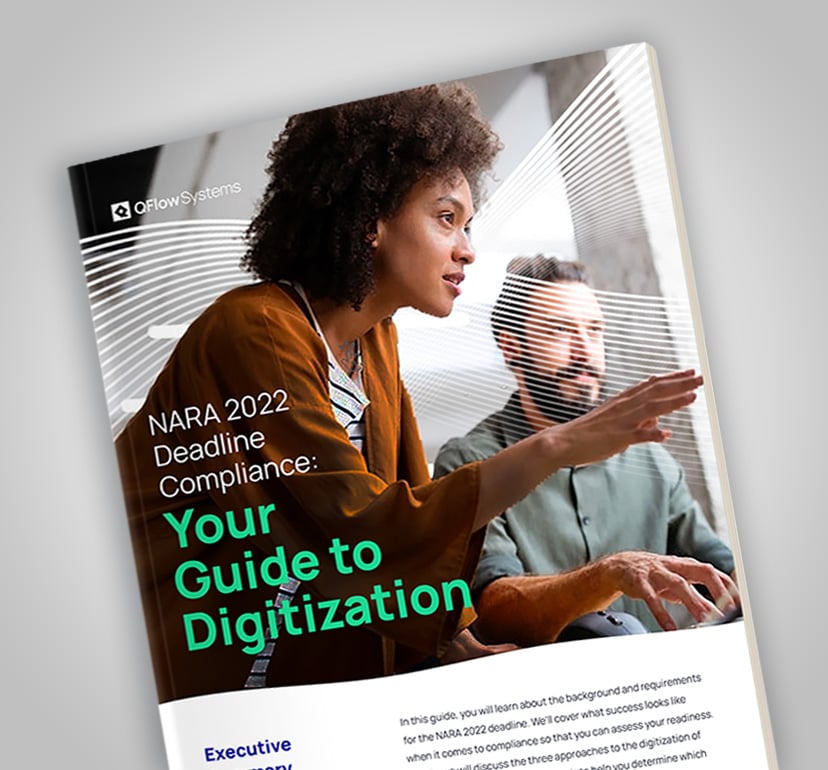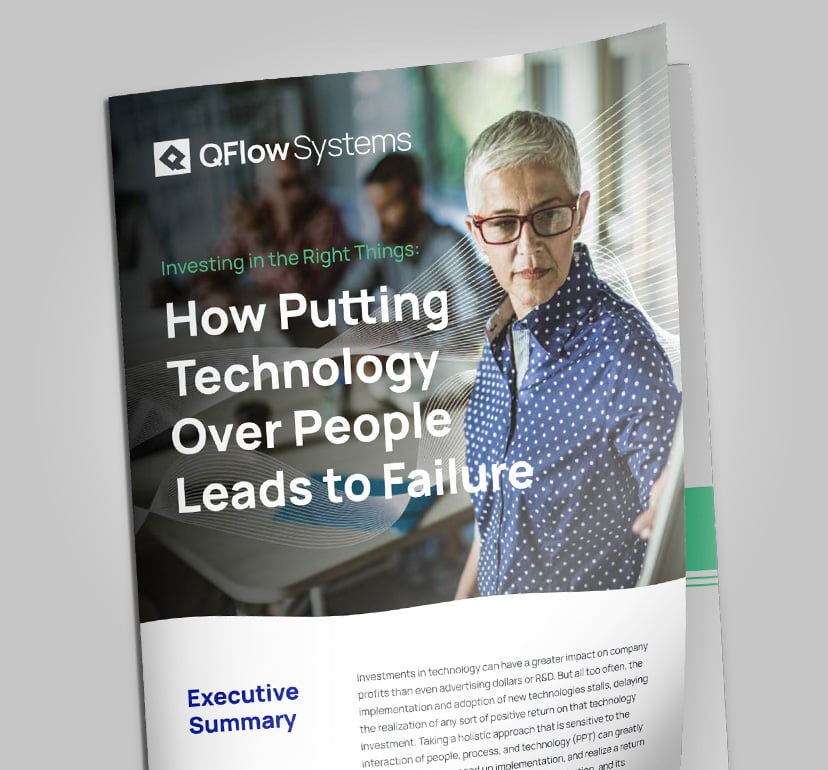A Government Agency Records Manager’s Guide
As a records manager in a government agency, you are well aware of the importance of an effective Electronic Records Management (ERM) system. Not only does it increase efficiency, but it also helps reduce costs, improve decision-making processes, and ensure data security. However, getting funding and buy-in from agency leadership for an ERM can be a challenging task. In this article, we will discuss how you can effectively communicate the benefits of an ERM system to your agency stakeholders and gain their support.
Step 1: Identify Your Agency’s Challenges
Before you can effectively communicate the benefits of an ERM system, you need to identify them yourself. Ask yourself the following questions:
- What problems is your agency facing currently related to records management?
- How can an ERM system address these problems?
- What are the potential cost savings and efficiency gains that can be achieved with an ERM system?
- What are the risks associated with not having an ERM system in place?
Once you have identified the benefits, you can start creating a persuasive argument for your stakeholders.
Step 2: Know Your Audience
Understanding your audience is critical when presenting your case for an ERM system. You need to tailor your message to their specific needs and priorities. For example, agency leadership may be more concerned about budget constraints and security than other stakeholders. Meanwhile, department heads may be more focused on improving their own operational efficiency.
“What’s in it for me?”
Answer this question for as many offices and stakeholders across your agency as you can.
Better understanding your agency’s stakeholders’ challenges and needs will help you position specific benefits of ERM that are relevant to each stakeholder. This can help you gain support as you work towards positioning ERM to your ultimate decision makers.
Step 3: Build Your Business Case
The most effective way to gain support for an ERM system is to build a strong business case that identifies key benefits and provides specific data and evidence to back up your claims. Here are some of ERM’s high-level agency-wide benefits that might be worth making your stakeholders aware of:
High-Level Agency-Wide Benefits of ERM
- Save Time
With an ERM system in place, every document is immediately accessible and easy to find, which means less time is spent on locating needed documents for business use, discovery, and FOIA.
Supporting Data:
Research shows that employees spend up to 1.8 hours every day searching for information. Gartner says that professionals spend 50% of their time searching for information, and on average, take 18 minutes to locate each document.
- Reduce Cost
With less printing, fewer filing cabinets, and reduction in off-site storage, ERM can create significant cost savings for an agency.
Supporting Data:
According to the U.S. Chamber of Commerce, Federal agencies continued use of paper-based processes costs federal agencies an estimated $38.7 billion a year. This costs the American public an estimated $117 billion a year. If the government achieved only 20 hours of workload elimination per employee, the net capacity gained would be worth $3 billion.
- Increase Compliance
Agency-wide record governance ensures compliance with federal regulations, including M-19-21 to manage all records electronically June 2024.
Supporting Data:
E-discovery sanctions are at an all-time high. If your agency can’t find responsive records, be prepared to pay the fines that can run to hundreds of thousands of dollars.
FY2022 was a record-breaking year for fines and recordkeeping failures played a significant role: $1.235 billion was made up of “cumulative penalties paid in connection with recordkeeping violations”
Almost 20% of all SEC penalties issued in 2022 were related to recordkeeping failures.
- Increase security
Access restrictions via group or individual controls allows for tighter control over data and less room for error. - Reduce Risk of Litigation
Stay in compliance with E-discovery and Privacy / FOIA regulations when your agency can confidently locate and produce responsive records.
- Gain Better Control of Agency Data
Document control such as version, creator, and date gives you an accurate picture of your data and set the framework for agency-wide automation.
Supporting Data:
Picture every book in every library, school, home, and company in the entire world. All those books combined make up 6% of all human data. In 2007 it was estimated that 94% of all data was stored in a digital format. However, 90% of all data ever produced by humans has been made in the last two years–and much of it isn’t digitized.
- Mitigate Risk
Easily back up and access documents in case of disaster (flood, fire, theft, etc.)
- Make Intelligent Business Decisions
Having the documents and data you need at the touch of a button gives every decision-maker in your agency the ability to make well-informed business decisions on behalf of your agency.
Step 4: Strengthen your argument with federal citations that call for ERM
M-19-21: Transition to Electronic Records
The National Archives and Records Administration (NARA) has set a deadline for agencies to transition to ERM by 2024. This mandate will end the acceptance of paper records and require agencies to modernize their Federal recordkeeping and transition to an ERM to comply with all records management laws and regulations.
This new regulation is intended to help reduce costs and decrease the burden and risk of conducting business with the Government. According to a Memorandum on M-19-21, “The Federal Government sends hundreds of millions of taxpayer dollars and thousands of hours annually to create, use, and store Federal records in analog (paper, non-electric) formats. Maintaining large volumes of analog records requires dedicated sources, management attention, and security investments that should be applied to more effectively managing electronic records.”
Executive Order 14058: Transforming Federal Customer Experience and Service Delivery to Rebuild Trust in Government
Executive Order (EO) 14058 was issued in December 2021 stating agencies must reduce administrative burdens, simplify both public-facing and internal processes to improve efficiency, and empower the Federal workforce to solve problems. “The heads of Agencies shall…improve the digital customer experience for their respective agencies’ customers by…modernizing records management” (Section 7, Part E)
ERMs listed under GSA’s Electronic Records Management Solutions (SIN 51821ERM) are equipped to support with this federal requirement.
M-19-13 Category Management: Smarter Contract Solutions and Practices
Category Management helps the government buy smarter—more like a single enterprise and
less like hundreds of individual entities. Buying common goods and services as an enterprise
leads to less redundancy, more efficiency, and more value from your acquisitions. Not doing so
leads to billions of dollars lost. To help with this, OMB developed a Spend Under Management
(SUM) model that assigns tiers to agency spending activity: Tier 0, 1, 2, and 3 Agencies are
tasked to reduce unaligned spending (Tier 0) by increasing the use of managed solutions (Tiers 1, 2,
and 3).
Electronic Records Management Solutions (SIN 518210ERM) under GSA’s Multiple Award Schedule (MAS) is considered Tier 2 Spend Under Management. Tier 2 means spending managed at a Government-wide level through multi-agency or Government-wide solutions that reflect strong contract management practices, including data and information sharing across agencies and using cross-agency metrics.
Step 5: Provide Real-World Case Studies Illustrating ERM’s Benefits
Streamlining Loan Processing and Record Workflows
Agency Challenge: At one USDA Agency, the absence of a standardized system for electronic document management was leading to inefficiencies in processing times. Despite some teams utilizing various digital tools, the majority still relied on paper and file cabinets for storing and organizing information. Agency leadership recognized that automating loan processing workflows was essential to improving employee efficiency and customer service. To achieve this goal, the agency needed to transition from a manual, paper-based system to a secure digital process.
ERM Solution: QFlow Systems designed, developed, integrated, and tested the Q-Action ERM platform, streamlining and automating the loan process. The platform included document management and business process management functionality that was tailored to the Agency’s specific needs.
Not only did Q-Action automate and streamline loan processing workflows, but for the first time, the Agency had a centralized repository containing all loan documentation that keeps borrowers’ personally identifiable information (PII), such as social security numbers and banking data, secure. Each record now serves as the single source of truth, preventing confusion or duplicate work caused by multiple versions or copies.
Results: By eliminating the manual keying of data, the ERM solution enabled the Agency to minimize overhead and reduce the chance of error throughout the loan process. Automated workflows also allowed the Agency to reduce redundant tasks for employees, giving them more time to initiate new loans and service customers.
Enabling Operational Continuity During the Pandemic
Agency Challenge: The COVID-19 pandemic hit the United States in spring 2020, and like so many other employers across the globe, one DoD Agency transitioned to remote work. The EDMS solution the Agency had used for years was rendered unusable, however, because employees were unable to access the EDMS from their home computers, which meant they could no longer view or process contract documents electronically. This highlighted the need for a more modern, flexible, and accessible solution.
ERM Solution: The Agency partnered with the QFlow team to alleviate the challenges of the legacy EDMS.
Replacing the legacy system with the web-based Q-Action ERM allowed the division’s employees to regain productivity while staying safe working remotely. The security built into Q-Action also met the needs of the division in storing confidential information.
Results: With Q-Action in place, division employees were able to resume pre-COVID productivity while working from home with secure access to the system from anywhere with internet connectivity. The division’s IT resources now carry less burden since the software no longer needs to be installed on individual workstations.
Ongoing maintenance and updates are also much easier for the division now. Since Q-Action is a COTS software, QFlow continuously provides updates to the platform without the need to involve customer IT teams.
Step 6: Follow Up
After presenting your case for an ERM system, be sure to follow up with your stakeholders. Answer any questions they may have and provide additional information as needed. Also, be sure to address any concerns or objections they may have. If necessary, revise your business case to address any issues that were raised.
In conclusion, getting funding and buy-in from agency leadership for an ERM system requires careful planning and effective communication. By identifying the benefits, understanding your audience, building a strong business case, and communicating the benefits clearly, you can successfully gain support for an ERM system in your agency.

